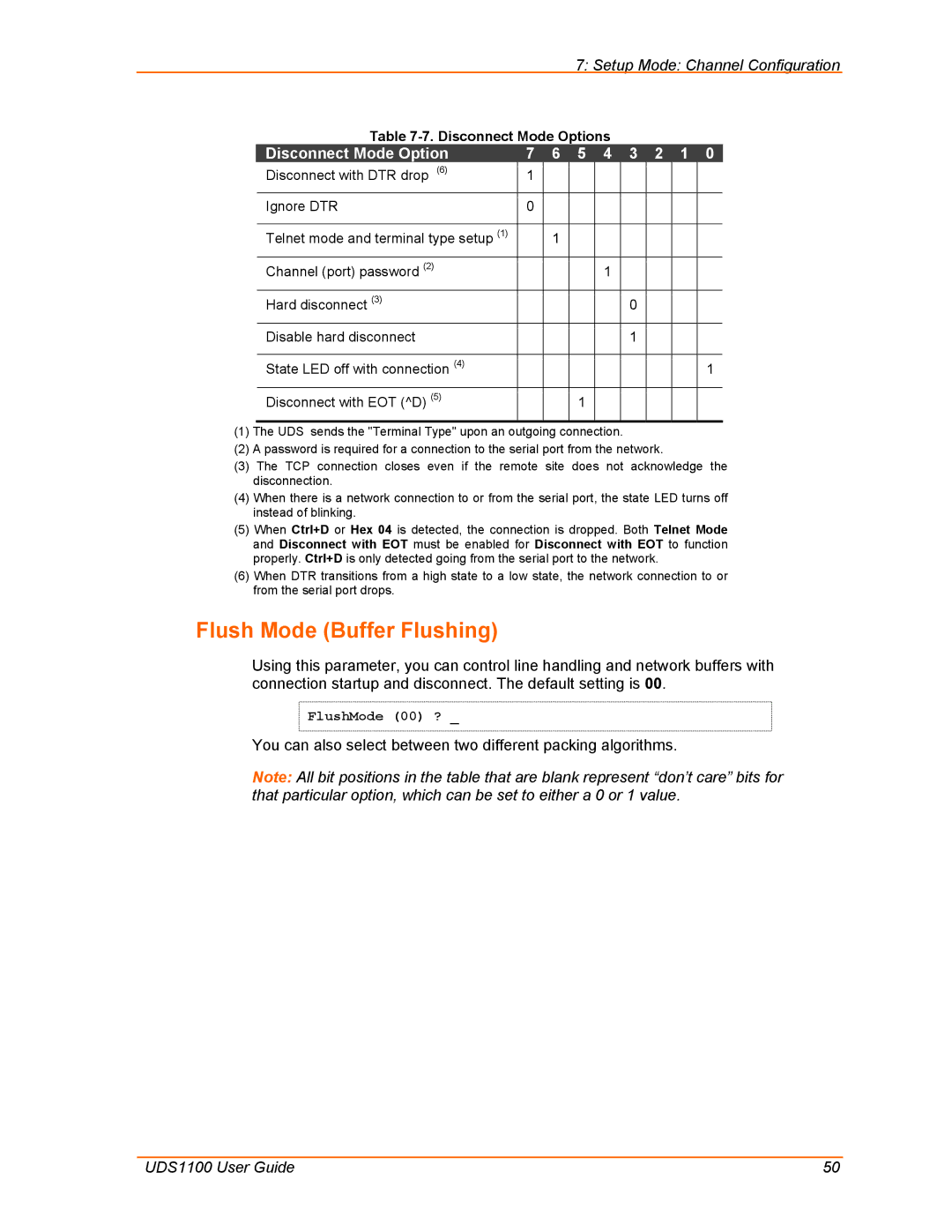
7: Setup Mode: Channel Configuration
Table
Disconnect Mode Option | 7 | 6 | 5 | 4 | 3 | 2 | 1 | 0 |
Disconnect with DTR drop (6) | 1 |
|
|
|
|
Ignore DTR | 0 |
|
|
|
|
Telnet mode and terminal type setup (1) |
| 1 |
|
|
|
Channel (port) password (2) |
|
|
| 1 |
|
Hard disconnect (3) |
|
|
|
| 0 |
Disable hard disconnect |
|
|
|
| 1 |
State LED off with connection (4) |
|
|
|
|
|
Disconnect with EOT (^D) (5) |
|
| 1 |
|
|
|
|
|
|
|
|
1
(1)The UDS sends the "Terminal Type" upon an outgoing connection.
(2)A password is required for a connection to the serial port from the network.
(3)The TCP connection closes even if the remote site does not acknowledge the disconnection.
(4)When there is a network connection to or from the serial port, the state LED turns off instead of blinking.
(5)When Ctrl+D or Hex 04 is detected, the connection is dropped. Both Telnet Mode and Disconnect with EOT must be enabled for Disconnect with EOT to function properly. Ctrl+D is only detected going from the serial port to the network.
(6)When DTR transitions from a high state to a low state, the network connection to or from the serial port drops.
Flush Mode (Buffer Flushing)
Using this parameter, you can control line handling and network buffers with connection startup and disconnect. The default setting is 00.
FlushMode (00) ? _
You can also select between two different packing algorithms.
Note: All bit positions in the table that are blank represent “don’t care” bits for that particular option, which can be set to either a 0 or 1 value.
UDS1100 User Guide | 50 |
